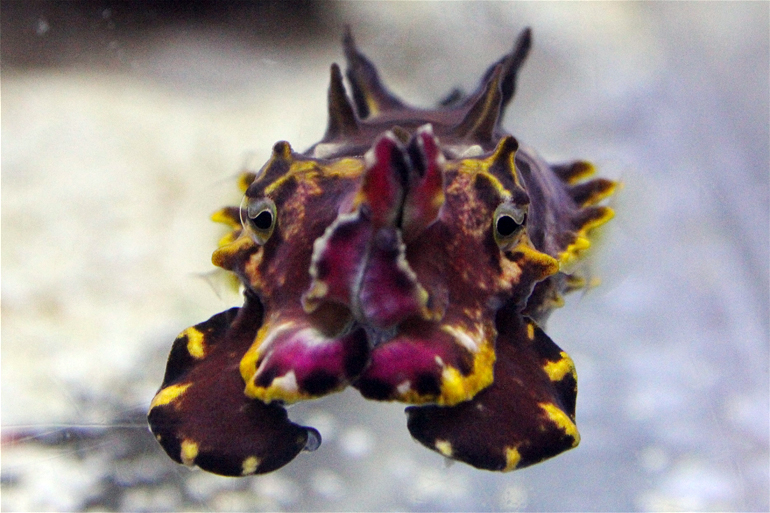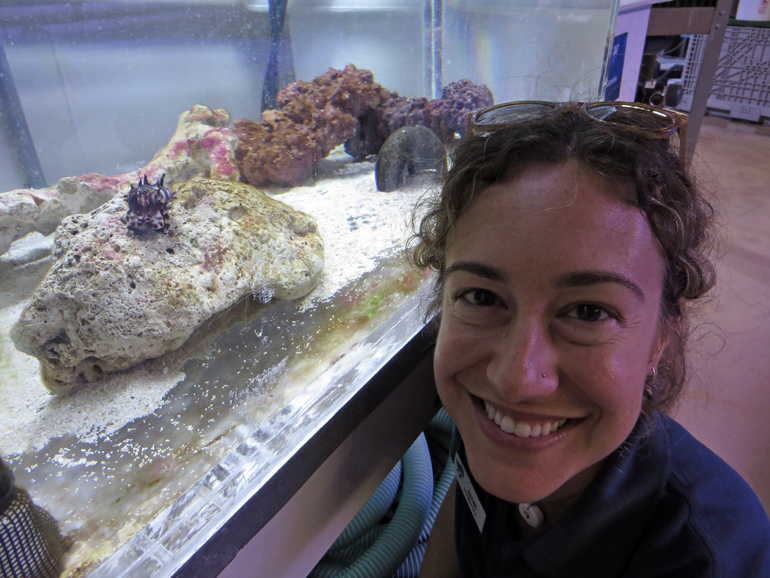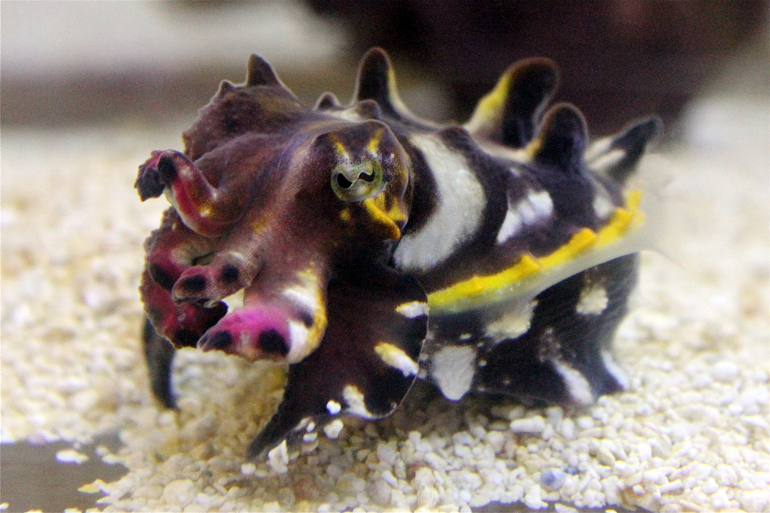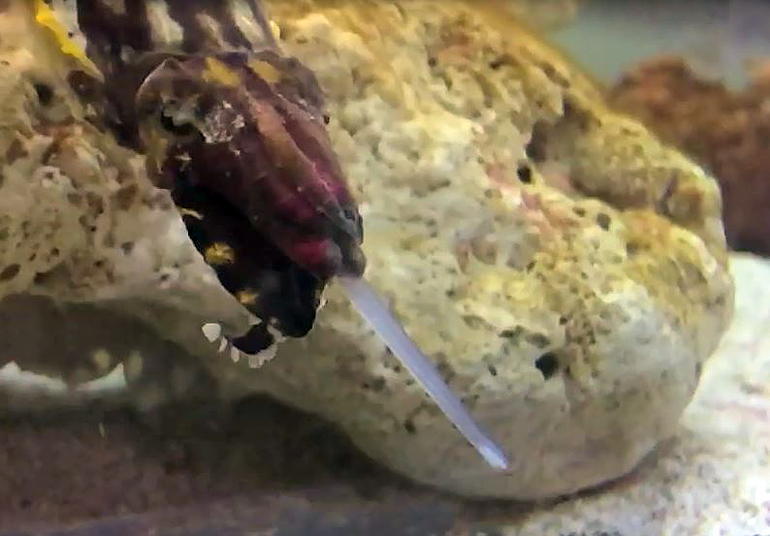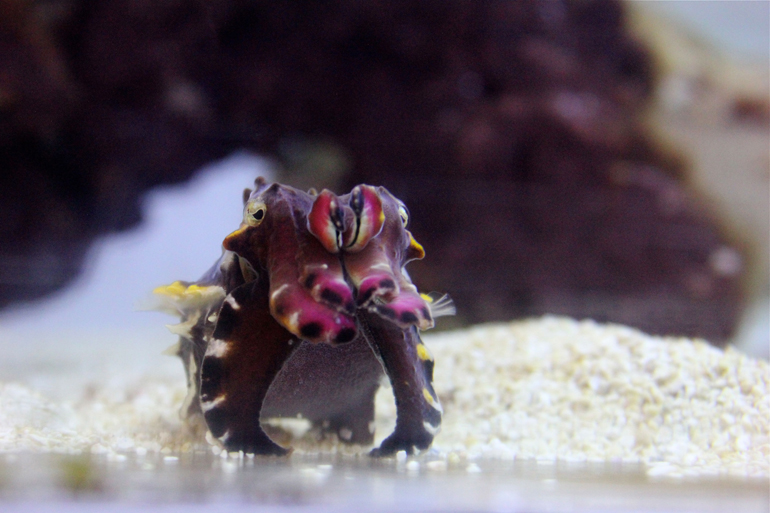The Flamboyant Cuttlefish
Hugh
Thursday, July 16, 2015
There are just a few animals at the Aquarium of the Pacific that can cause me to have an affectionate emotional response when I look deep into their eyes; sea otters, sea lions, penguins and flamboyant cuttlefish.
In the Jewels of the Pacific exhibit in the Tropical Pacific Gallery is a group of the most amazing creatures I’ve ever seen on land or sea. Although small, their personalities and abilities are addicting and fascinating. At first glance they may look like a tiny herd of colorful neon glowing rhinos or triceratops walking along the bottom of the exhibit. The color and texture of their bodies continuously changing making them look like an electrical light parade float at Disneyland. Then a blink later they can dramatically change their color and blend into their background looking like a rock. They are called flamboyant cuttlefish and they really live up to their names. It’s also really neat how they will interact with you through the glass of their exhibit. They’ll actually come up and stare at you with their mesmerizing alien-like eyes. You really feel like they are analyzing you. You can’t help but feel a connection with these little critters.
I’ve only recently became aware of these cuttlefish so I went to an expert to learn more about them. Janet Monday is one of the aquarists tasked with caring for the flamboyant cuttlefish. She told me that they are found in the Indo-Pacific region from Indonesia to Northern Australia. They have eight arms which are at the front of their bodies and two clear tentacles that they use to capture prey.
An interesting anecdote is how they also use their tentacles to explore their surroundings. The Aquarium of the Pacific is lucky enough to actually breed flamboyant cuttlefish. Janet said that when they are young they are fed tiny mysid shrimp. Later when they are introduced to larger shrimp to eat they don’t immediately capture them. Instead at first they’ll extend their tentacles out slowly and gently tap the shrimp, seemingly asking the question “Is this food?”
Their cuttlebone, which is used to change the animal’s buoyancy, is smaller than other cuttlefish species which is why they spend most of their time walking along the bottom. This leads to the herd-like scenes described earlier. But instead of imaging how it looks, check out the video I’ve put together and watch the flamboyant cuttlefish in action. Janet was kind enough to narrate the video.


